
Playing through a level, you don't feel as if you are there to defeat someone. You're either there to help them, or to stop them before they hurt themselves.
The post In Sound Mind Review appeared first on 8-Bit Island.
]]>
Psychological horror games are good in theory, but only work if they really make you feel something. That feeling doesn’t always need to be fear either, and that’s what In Sound Mind manages to do so well. It’s not a constant barrage of adrenaline, but a slow build up of tension and unease. Which is all very surprising after one of the weirdest, and edgiest opening lines in a video game. But I won’t hold that against it. Much.
You play as Desmond, an amnesiac physiologist who is trying to piece together his own memories by exploring the literal psyches of his patients. Not so surprisingly, this does not go well for him. There’s also a talking cat, weird ink monsters, and noxious purple gas. In Sound Mind doesn’t shy away from the weird, and it works well in the game.
That goo isn’t good

You’ll start the game in the basement of your apartment and soon come to realise that something has gone seriously wrong in your city. The first major thing to keep an eye on is the flood of weird purple goo outside that’s completely swamped the city you live in. You also have a terrible work-life balance. But that’s to be expected when your apartment, your office, and all of your patients’ apartments are in the same building. Oh, and you’re very clearly being watched since every time you approach a phone. Like it starts ringing and the main villain takes time out of his busy day to taunt you. It’s not subtle.
The various bosses in the game are simultaneously the best and worst thing about it. The main villain is the worst for it. He calls you on the phones scattered around the level constantly, taunting you and generally being a megolamaniac. It would be effective if he didn’t sound so terribly cliché and over acted, and also wasn’t called Agent Rainbow. I find it hard to take him seriously. And then he goes and creeps around the levels so effectively that you usually only notice him when he disappears. Or when he’s standing in front of you, locking you in a freezer to die.
I find that rude, honestly.
Fight me

On the flip side, the bosses for each level are amazing. Each level is presented as a tape recording of your therapy sessions with your patients, and the main boss for each level is said patient. It doesn’t take long for you to realise when you go into a new level, that you’re heading in there to fight Desmond’s demons, as much as his patients. These are all people that have serious mental health issues that Desmond failed to help. They have become the villains of their own stories, but never really come across as completely evil.
In Sound Mind tackles the issues around mental health well. Especially in an industry that likes to either play mental illness as a joke, or a reason to be a bad person. It never comes across as disrespectful. Each of Desmond’s patients are painted as human first, mental illness second. Playing through a level, you don’t feel as if you are there to defeat someone. You’re either there to help them, or to stop them before they hurt themselves. As a reflection of this, most boss fights are more akin to puzzles that bring the bosses some measure of peace.
Delightfully unsettling
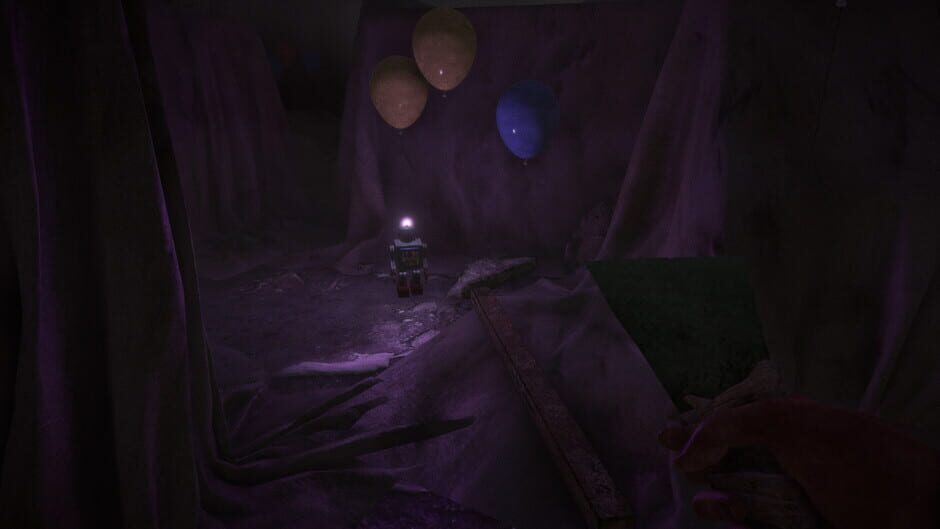
Each level is well designed, with fantastic attention to detail. The levels mix the mundane with the uncanny, so you end up with a perfectly normal supermarket that slowly turns into a haunted maze or a beach that turns to floating shipping containers. It works really well to create an uncomfortable feeling when you’re exploring a level. Each level introduces a new theme, and new tools or abilities. While the apartment allows you to calm down, the fact that you have no idea what could possibly come up in the next tape world leaves you with a delightful sense of unease.
Adding to that unease is the sheer panic of combat. Not because you’re greatly outnumbered, or underpowered, but because nothing within In Sound Mind lends itself to shooting enemies. The controls are shaky, and most of the time it’s easier to just run away rather than dealing with the annoyingly slow reload times, and Desmond’s inability to consistently point a gun at anything. Luckily, there are usually environmental hazards that can be used to your advantage. Also a shard of glass to stab things with when things start to go really wrong.
Petting cats keeps monsters away, fact

In Sound Mind tells an impressive story about people struggling with life, and throws in enough tense atmosphere, and creepy jumpscares to keep you on your toes. You’ll never know what uncanny level you’ll stumble into next, but you’ll enjoy it. It allows itself to be more than just a horror game, by being genuinely enjoyable, even as you’re creeping around trying to hide from monsters.
Also, the talking cat can be pet. This is very important.
The post In Sound Mind Review appeared first on 8-Bit Island.
]]>
The cards lend themselves to an effective visual motif that ties everything together superbly. The character illustrations are gorgeous, and the combat effect animations are striking. The game is so flashy, in fact, that it results in noticeable lag on the Switch, particularly on loading screens or when moving between menu tabs. It is very, very pretty.
The post Voice of Cards review appeared first on 8-Bit Island.
]]>
We play a fair few adventure card games in my household, so my curiosity was piqued when I learned about Voice of Cards: The Isle Dragon Roars. Square Enix advertises Voice of Cards as a JRPG from the creators of NieR told entirely through the medium of cards.
Cards? Dragons? Square Enix? I was in from the word go. I reviewed a Switch copy, but Voice of Cards is also out on PS4 and PC via Steam.
Out the other end, I had undoubtedly had a good time, but not for the reasons I went in for.
Wait, it’s all cards?
When Square Enix says Voice of Cards is told entirely through the medium of cards, what do they mean exactly? The world takes place on a card table covered in cards. The map is explored by moving to facedown cards, which flip to reveal the environment. Dialogue is represented by text on cards. Characters and monsters are illustrated on cards. Combat uses cards, (also dice and gems, but these don’t fit the narrative Square Enix and I are going for, savvy?).
To summarise, it’s basically all cards – from dialogue to exploration to combat.
However! Brace for controversy!
I would like to argue that Voice of Cards is not so much a card game mechanically as it is aesthetically. Sure, everything looks like a card, but take off that coat of paint, and Voice of Cards is a bog-standard JRPG. There’s no ground-breaking gameplay here.
Combat comprises characters using four skills that can be swapped out as desired, with certain enemies weak or resistant against types. Stronger skills use a mana-type resource called gems which replenish after every turn. There’s no real deck-building or randomised shuffling element. Dice rolling adds chance, for example, when calculating whether you succeed in running away from enemies, and there are randomised world events, but again – nothing outside of what you can experience in a non-card game.
That said, in the towns you visit in-game, there are card parlours where you can play an actual card game so you can play a card game while playing a card game.
The cards suit
So, the cards are more for looks than anything. But damn, Voice of Cards does look amazing.
The cards lend themselves to an effective visual motif that ties everything together superbly. The character illustrations are gorgeous, and the combat effect animations are striking. The game is so flashy, in fact, that it results in noticeable lag on the Switch, particularly on loading screens or when moving between menu tabs. It is very, very pretty.
Adding to the appealing looks are some appealing sounds. The tunes are atmospheric and sufficiently pleasant that my partner never complained when they repeated endlessly in the background.
A further point of difference is that all dialogue and descriptions are voiced by a single narrator, not unlike a Dungeons & Dragon GM. Heck, the game even calls the narrator “GM”. Todd Haberkorn voices the English version and sounds low energy, even mocking at times. I genuinely loved it and never skipped a description.
Card tricks with a twist
Voice of Cards doesn’t have time to be too complicated, coming in at 15-20 hours average playtime. Very short for those who are used to 50–100-hour JRPGs. To be honest, I didn’t mind this. As a time-poor person, a bite-sized JRPG was a relief for my schedule.
Not only is Voice of Cards not very long, it’s also not very challenging. This is especially so if you become addicted to filling out the map, which results in over-levelling very early on.
However, this short and relatively easy game does hide some surprises in its storytelling. For example, collectable cards contain a two-part description of characters and monsters met during the adventure. The second part of the descriptions, revealed by flipping over the card, reveal twists so dark they’re practically two-sentence horror stories. Voice of Cards is honestly one of the few games where I was genuinely excited to collect not for completion’s sake, but to read the bonus text.
The final deal
Voice of Cards can’t decide if it’s a card game, a JRPG or Dungeons & Dragons. While I won’t be a card-carrying member of the Voice of Cards fan club, the real drawing card here is how the game looks and the twists and turns of the story. That may leave some who wanted a mechanically solid card-game with some real challenge unsatisfied.
I can objectively see its flaws, but I can’t deny I liked the game. Beyond whatever aspirations I held for it initially, Voice of Cards: The Isle Dragon Roars was a good time, and perhaps that’s all it ever needed to be.
The post Voice of Cards review appeared first on 8-Bit Island.
]]>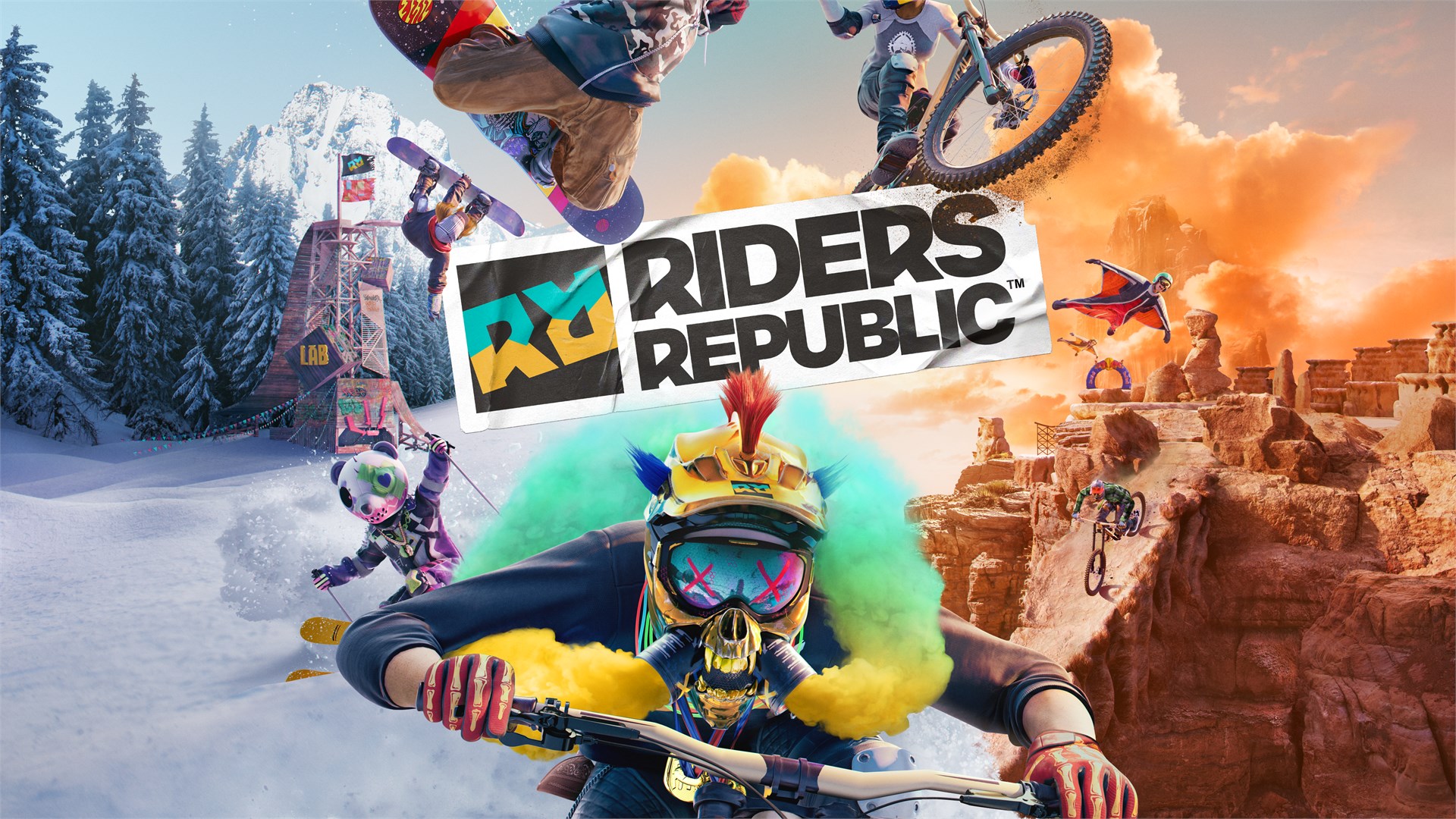
If there is one thing I like about games it is getting to do absolutely awesome things that in real life I could never even dream of doing. If there is one thing I hate about games it is hearing lingo that makes me wonder if I or the game’s writers are old. Riders Republic […]
The post Riders Republic Review appeared first on 8-Bit Island.
]]>
If there is one thing I like about games it is getting to do absolutely awesome things that in real life I could never even dream of doing. If there is one thing I hate about games it is hearing lingo that makes me wonder if I or the game’s writers are old. Riders Republic is a healthy dose of both.
Stay breezy
If you aren’t aware of the premise, Rider Republic is a pretty awesome idea. Imagine Forza Horizon but with extreme sports instead of racing cars. You are dropped on a mountain with a few different terrains, well by different I mean snowy and not snowy. Here you get to take part in events or explore and find things in the wilderness. Sounding good so far?
Well how about if you can do it on either a bike, a snowboard, skis, hell even a jet fuelled glider? Got your attention yet? You can jump from doing tricks on your snowboard, to smashing out a downhill race on your bike, to exploring the side of a mountain in your wingsuit looking for new things to find…or fluffing around on your scenic route to the next event you want to tackle.
If you have played Forza Horizon then that should have told you everything you need to know about the game, if not then you may need to read on.
Cool cats

The story basically has you joining this awesome festival. You are there to make a name for yourself across all the disciplines and the story … doesn’t have much more to it. But you don’t need much more story so I am not complaining there. The biggest issue the game has is there is a bit too much dialogue. For the most part it is fine but sweet mother of god the lingo.
Whether they talk about filthy riding, cool cats, how there is more radness, or being told to stay breezy. This feels like the kind of stuff an old man would think the cool kids say today because…it’s kinda what old farts said back when they were young. So either this is the current lingo and I am an old man (possible) or the writers are old so don’t know what the kids actually say (also possible).
Either way that shit got grinding fast.
More radness
Despite this annoyance, the game has something going for it, the fact that the game is awesome. Seriously, it is fun as hell. Take snowboarding for example, it plays way better than Steep but not quite as good as my brain remembers SSX being. So given my absolute adoration of SSX memories, this is pretty damn impressive.
Then if you throw on top of that mountain biking, wing suiting and skiing, you have yourself one varied game. Biking took a while to get used to the turning but once you get those corners down it is so damn satisfying. The game’s biggest strength is the variety as each piece by itself would be a good enough game, but as a group it is so fun.
Sick of snowboarding (like that’s possible) go for a bike ride. Sick of the ground, go for a jet powered wingsuit ride in the sky. Sick of snowboarding, skiing, wingsuit flying and mountain biking? Well then you are too hard to please.
The game also uses two different control schemes. One is best for racing and the other is best for tricks but you may find one works best for you. The game lets you try both as you are introduced to it and this is enough of a taste to feel what works for you.
You are so money

Riders Republic is a jack of all trades and a master of none, and in this context I am OK with that. The game is so much fun to play, each component works on its own and combined makes for a varied high energy experience. Skip the cutscenes that aren’t teaching you anything and you’ll be fine.
The post Riders Republic Review appeared first on 8-Bit Island.
]]>
Welcome to Yara, a tropical paradise frozen in time. FarCry 6 thrusts players into a modern-day guerrilla revolution. Dictator Castillo dreams of his country returning to its former glory, even if it means dragging his citizens through a living hell to do it. His son Diego has a moral compass and disagrees. You don’t play […]
The post FarCry 6 review appeared first on 8-Bit Island.
]]>
Welcome to Yara, a tropical paradise frozen in time. FarCry 6 thrusts players into a modern-day guerrilla revolution. Dictator Castillo dreams of his country returning to its former glory, even if it means dragging his citizens through a living hell to do it. His son Diego has a moral compass and disagrees. You don’t play as either of them, instead being a random person driven to incredible violence by sheer circumstance.
Ah, FarCry. I’ve missed you.
So you want a Yaran revolution?
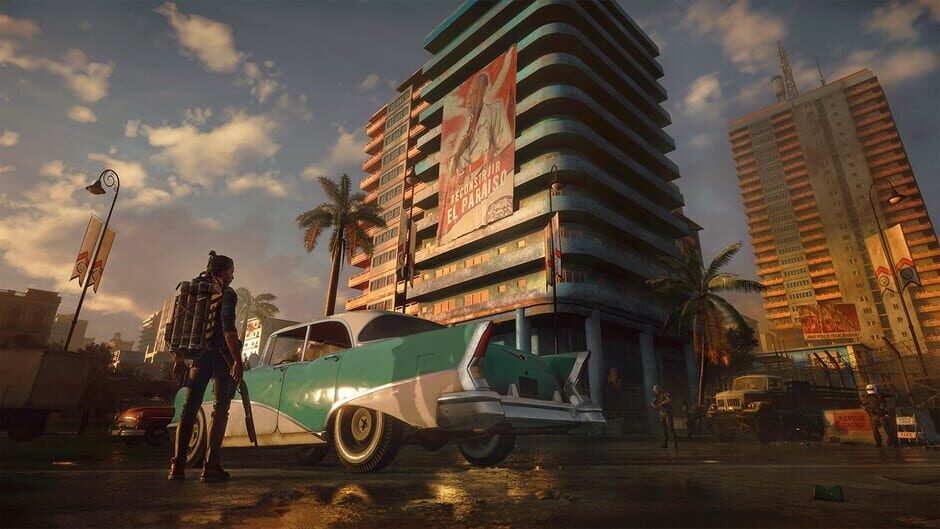
Hype, right?
OK, this is a FarCry game, and it’s a more serious setting than ‘doomsday cult‘ of 5, but still not as engaging as ‘tourists land on drug island by accident’ of FarCry 3. The Yaran revolution (second revolution, really, which goes to show how well the first one went) is a compelling fight. I mean, give me any excuse to join a revolution and I’m there.
The Yaran military are almost cartoonishly fascist. Occasionally you meet a bribeable official, but never a soldier torn over committing atrocities in the name of progress. This works, as you don’t even feel a little bad melting these drones with a flamethrower, poisonthrower, hyper-powered crossbow, or any other delightful flavour of steaming hot death.
FarCry has always (since 3) been known for its stellar gunplay, and I can’t fault FarCry 6 either. Assault rifles feel assaulty, missile launchers feel bulky, and the nail gun is annoying; just like in real life. The level of customisation is also much appreciated. Why yes, Ubisoft, I do want a silenced armour piercing MP7 in matte black that I can use to clear a roadblock in 45 seconds without being noticed. Yes, I do want a compound bow to snipe with in retro style. And yes, I certainly do want an improvised weapon that fires deadly CDs at enemies.
You know me so well.
How Far can you Cry?

FarCry 6’s Yara is a beautiful archipelago, with a rich history full of caves, mysticism, and inexplicably advanced guns hidden in these caves surrounded by mystic symbols. And that’s one of the more beautiful aspects of a FarCry game; the suspension of disbelief is needed, true, but it’s a damn romp.
The driving isn’t great. Never has been in FarCry, really, so nothing hugely surprising. Helicopters, planes, dune buggies, tanks, and a weird hovercraft that handles like a lawnmower (and may have at one point actually been a lawnmower) are all available, but there is only one way to travel in Yara.
Wingsuit.
Seriously, airdropping to a fast travel point and gliding your way to the nearest objecting is now and forever will be the height (ha) of mobility. Yeah your clothing can give you neat bonuses for speed, which of course I use too, but the wingsuit is king, queen, and the whole royal court. Mobility and traversal are how you get me, y’all, and I love the freedom here.
A wheely good dog
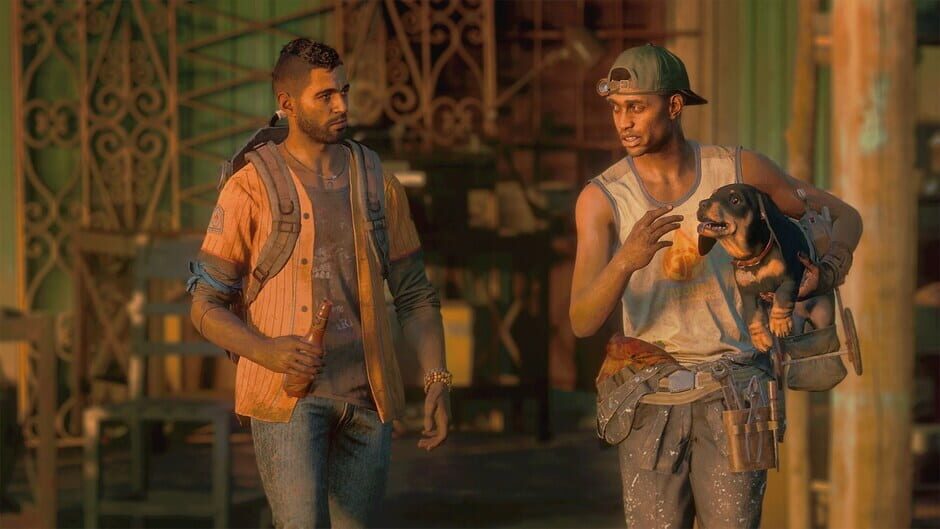
I regret that joke. But Chorizo is now the main character of FarCry 6, and I think that’s glorious.
For the last several games, animal companions have been the best part of a FarCry game. And while nothing compares to the wonders of snuggling Primal’s saber-toothed tiger, when you have adorable wheelchair dog and ghost jaguar on your side, you’re still gonna have a good time. Does the ludicrous nature of distracting a fascist military with a special needs sausage dog undermine the seriousness of the revolution you’re a part of?
Yes. Yes it does.
And that’s where we hit a wall. This story may just cut closer for me due to being a bit of a history nerd and recently learning an awful lot about actual horrors that went down in real-life banana republics, but it certainly puts a damper on the fun when the human rights abuses you’re fighting are interspersed with some wicked cool dubstep.
That’s what FarCry does, right? Push the envelope, make things uncomfortable and then cut the tension with a weirdly coloured gun or a crocodile in a jacket. I dunno; fun as it is, are we calling time on good taste here?
FarCry 6 my ass, it’s probably Millhouse

Don’t get me wrong, FarCry6 is a solid game. It hits all the marks of the previous entries, with the trademark humour and a decent dose of absurdity. But it isn’t sharp, or new, and it certainly doesn’t push any boundaries. As a shooter it’s a solid win, but I expected more from FarCry.
I’m an Irish immigrant living in New Zealand, so I’m not the right person to judge how accurate the depiction of a Carribean dictatorship. But it does feel believable, in the “oh hell this couldn’t happen but also it definitely does” kind of way.
There comes a time in every game’s life when it’s gone as far as it will go. FarCry 6 isn’t there yet, but this iteration might be writing on the wall.
Still fun though.
The post FarCry 6 review appeared first on 8-Bit Island.
]]>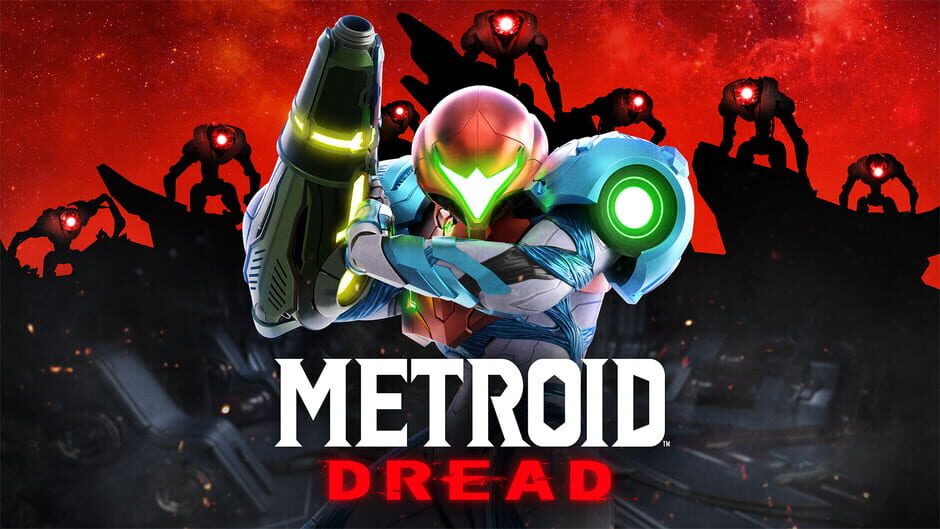
Samus is back and this time it’s… personal? Was it not before? I really can’t remember. Metroid Dread picks up after the events of Metroid Fusion investigating a mysterious from the isolated planet. Oh snap It’s Castleroid time I don’t know if you know this, but Metroid has a bit of a reputation. Platforming in […]
The post Metroid Dread review appeared first on 8-Bit Island.
]]>
Samus is back and this time it’s… personal? Was it not before? I really can’t remember.
Metroid Dread picks up after the events of Metroid Fusion investigating a mysterious from the isolated planet. Oh snap
It’s Castleroid time
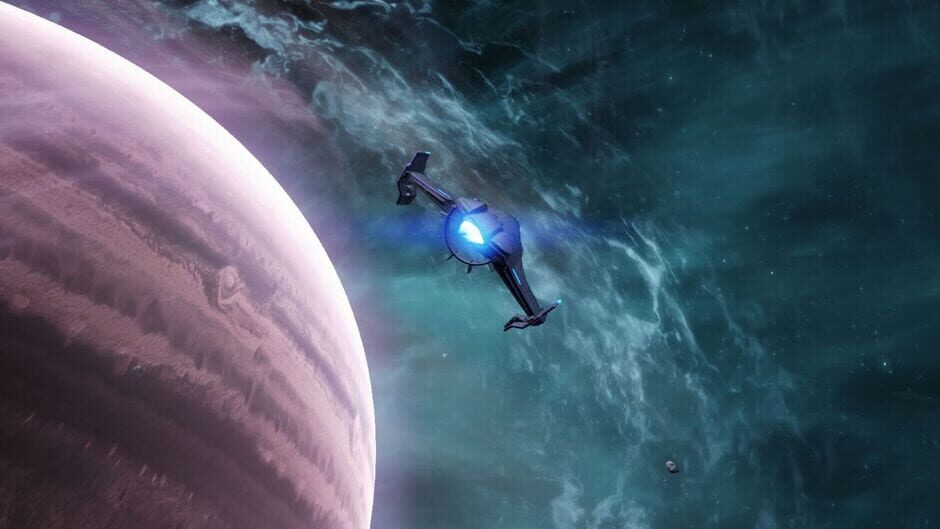
I don’t know if you know this, but Metroid has a bit of a reputation. Platforming in 2D hasn’t gotten any easier, and shooting random parts of the map in the hopes of finding the way forward is still just as fun as before.
That’s not fun. It never was.
Visually the game is smooth, and not overly busy. Managing to harken back to your old style while also updating graphics isn’t that easy, so kudos where they’re due.
Music? Not so much. Repetitive is a word a lot of people repeat when they want to use a word describing something repetitive. Did that sentence get annoying? Welcome to the Metroid Dread soundtrack.
And yet I can’t stop playing.
Mestleroidia, but also sneaky
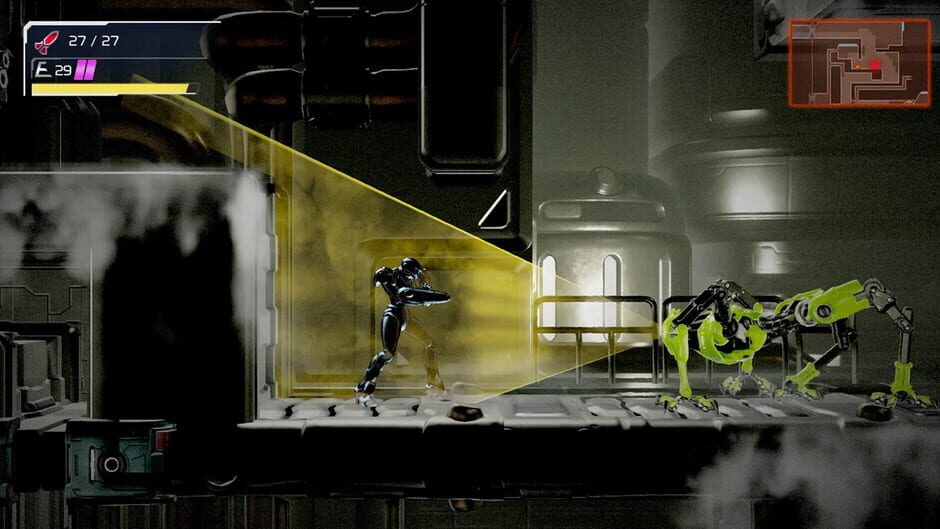
Aside from the punishing difficulty, there’s an interesting new aspect to this particular romp in the Samus suit: stealth. See, in classic sci-fi fashion, some intense robots were sent to planet ZDR before Samus picked up her contract, but they got hacked and now they don’t like our favourite bounty hunter.
It ain’t easy being Samus.
Since it’s damn near impossible to kill these things without super awesome rare Omega energy, you’re left to skulk and hide to avoid them. Which you will fail at. A lot. And then the madcap chase sequence happens, as you desperately try to get enough distance between you and the killbot who totally just wants to talk.
While it’s not an instant kill should the bot catch you, the chance to counter is so slim that it may as well be. In my playtime, I managed to pull it off maybe 15 times, after being caught… well, more than that.
Honestly, if they weren’t called E.M.M.I., these robots would be perfect nightmare.
Wish there was a better word for these games
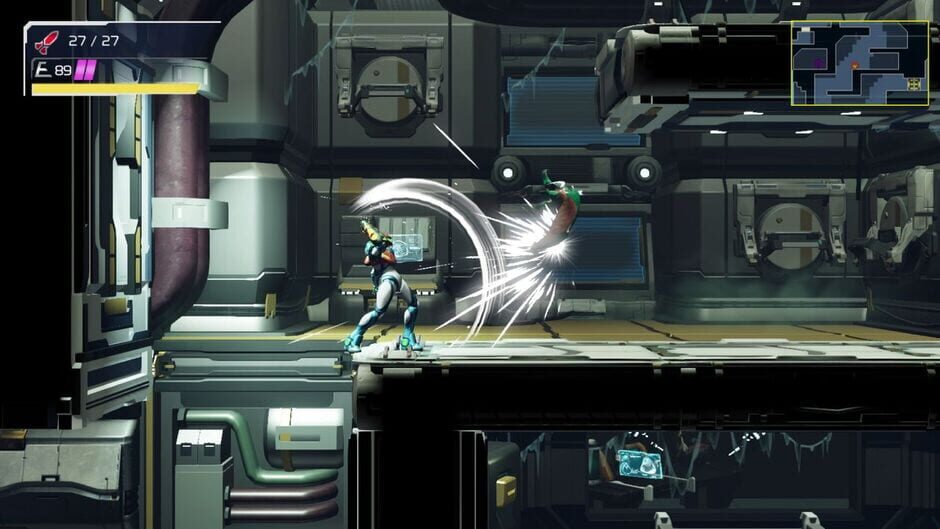
Speaking of countering, I’m really not a fan of parrying in a primarily shooting-based game. I know it’s what all the cool kids are doing, but honestly, I don’t associate Metroid with melee at all, so shoehorning it in here is not only irritating, but fundamentally jarring.
Speaking of ludiucrous decisions, I’ve seen someone refer to the aiming system as similar to filling out a mortgage application. As someone who has done that in the past, I can safely say that this is more annoying, but with fewer life-alterting ramifications. Contorting your hands into mangled claws to hold L and R simultaneously to aim your rockets, then use both sticks to move and actually fire with Y?
Seriously, what the hell. Uncomfortable, convoluted, and just plain not fun.
Good thing the rest of the game is decent, right?
Wait, what’s a Metroidvania?

Metroid Dread is a punishing game, with a steep learning curve that may put off modern players. Back in the day, you had to stick with a challenging game because there weren’t many other options. Now we can swap to something else lickety split, and I feel like many people will.
Much of the game is irritating, frustrating, and overly reliant on past goodwill. But damn, I keep going back.
l argue that as long as you’re having fun, it’s worth sticking with. If it gets too much, take a break. If it’s still too much, well, Hollow Knight and all the other Metroidvanias are right there.
The post Metroid Dread review appeared first on 8-Bit Island.
]]>
As I write this during a pandemic-induced lockdown, I am reminded that this time last lockdown I was reviewing Pokémon Mystery Dungeon: Rescue Team DX. Eighteen months later, I’m reviewing another dungeon themed game on Switch – Kitfox Games’ Boyfriend Dungeon. Don’t let the clickbait title of Boyfriend Dungeon give you the wrong idea. Ain’t […]
The post Boyfriend Dungeon review appeared first on 8-Bit Island.
]]>
As I write this during a pandemic-induced lockdown, I am reminded that this time last lockdown I was reviewing Pokémon Mystery Dungeon: Rescue Team DX. Eighteen months later, I’m reviewing another dungeon themed game on Switch – Kitfox Games’ Boyfriend Dungeon.
Don’t let the clickbait title of Boyfriend Dungeon give you the wrong idea. Ain’t nothing sinister here. Just your standard roguelike dungeon-crawler that doubles as a dating-sim visual novel where your weapons are the dates.
Like I said, standard stuff.
Summer lovin’
After a quick character creation scene where you can choose your looks, pronouns, and drink of choice, your summer of love at Verona Beach begins. However, this isn’t a normal Tinder dating scene, as everyone at Verona Beach is either able to transform into a blade or wield one.
Naturally, the hottest thing to do in town is for swords and wielders to explore the local dungeon (“dunj”) together in a rogue-like dungeon-crawling format.
Don’t think too deeply about this – Boyfriend Dungeon certainly doesn’t.
As mentioned, Boyfriend Dungeon doubles as a dating sim with seven different weapons to date. Your relationship meter increases by fighting together in the dunj and buying affection with expensive gifts. If you’ve ever played Dream Daddy or Best friends Forever, you’ll be familiar with the visual novel date format where you can enjoy the fruits of your dunj-delving, gift-giving labour.
Thankfully “Boyfriend Dungeon” is a misnomer in that a girlfriend and two non-binary cuties are in the Verona Beach dating pool. Most characters are openly comfortable with polyamory, asexuality, or keeping things platonic.
Happened so fast
The combat in Boyfriend Dungeon doesn’t take too long to figure out, with each weapon (Date? Weapon? What’s the polite terminology here?) a different riff on the same basic theme. Some are quick, some hit hard, some are great at handling trash mobs. You know, like real dating. The laser sabre was both my favourite playstyle and my favourite boy, so I was happy.
The dungeons themselves are both quirky and thematically apt. The wielder’s insecurities take the form of anthropomorphic monsters, allowing your character to literally fight their fears.
Now if only I could slice up my student-loan with a sabre…
The Boyfriend Dungeon package is wrapped up in some very slick UI that’s easy to use and has lovely personal touches. For example, you can pick your drink of choice and your healing potions will show up in the world as that drink.
The full soundtrack by Marskye and Madeleine McQueen is available on Spotify, and even if you don’t end up picking up the game, I recommend you have a listen. They’re light, trendy bops that both capture the rush of summer hook ups with an underlying emotional depth. Seriously, they’re solid tunes.
I met a girl crazy for me
Many dating sims have an overlaying theme tying together potential dating partners; groups of dads, groups of pet-owners, groups of gender-bending fairy-tale characters. But in Boyfriend Dungeon? I couldn’t pick it. Beyond all being able to turn into weapons, of course. In human form they vary as wildly as a university student, to a witch, to a K-Pop star.
The thematic consistency in Boyfriend Dungeon comes instead from the experience of putting yourself out there and meeting new people. Maybe you’ll be rejected; maybe you’ll meet someone who hurts you. Boyfriend Dungeon asks you to accept these risks in the hope that you’ll meet someone who makes it all worth it.
While I enjoyed the story and the maturity displayed, I would have loved for it to be longer. The runtime is around 6 to 8 hours, meaning some players will be able to play through the entire game in a single day if they’re feeling so inclined. Cut the time down even further if you’ve just come off the back of a Hades binge – you’ll find this combat a breeze. When paired with the fact that there are only two dungeons in town, I couldn’t help but feel like summer in Verona Beach finished just as I was getting into the swing of it.
Met a boy cute as can be
Slight spoiler warning, but any discussion of Boyfriend Dungeon will inevitably touch upon the discourse surrounding its villain and his stalker behaviour. To summarise, the developer added a content warning after feedback that the stalking plot was triggering for some players. After the warning was added, a vocal minority requested that players have the option of choosing not to engage in the stalking plot at all. This topic has been discussed widely and extensively elsewhere so I won’t do a deep dive, but just to say that while the depiction of trauma shouldn’t be fetishized, it also shouldn’t be sanitised. LGBTIA+ media shouldn’t be held to an impossible standard beyond what other media is held to.
Boyfriend Dungeon is a short but lovingly crafted ode to putting yourself out there and life-changing summer flings. I sincerely hope that Boyfriend Dungeon is remembered not for the discourse, but for the pairing of two wildly different game genres and making it work.
And dating weapons. That concept is wild, yo.
The post Boyfriend Dungeon review appeared first on 8-Bit Island.
]]>After reviewing the Micro Machines World Tour game many years ago I learned a major lesson, if a game uses an IP in a way that should be a slam dunk, that doesn’t guarantee success. In case I am beating around the bush too much, a Micro Machines game should be awesome, Micro Machines […]
The post Hot Wheels Unleashed Review appeared first on 8-Bit Island.
]]>After reviewing the Micro Machines World Tour game many years ago I learned a major lesson, if a game uses an IP in a way that should be a slam dunk, that doesn’t guarantee success. In case I am beating around the bush too much, a Micro Machines game should be awesome, Micro Machines World Tour sucked. So naturally I was careful about being too excited with a Hot Wheels game.
Well my apprehension wasn’t warranted. Hot Wheels Unleashed is a banger.
Fast Gassin
What Milestone has produced here is an interesting game. The steering, acceleration, and drifting feels like a kart racer, but without the gimmicks. So it winds up acting like a serious game but controlling like a more relaxed fun game. This weird happy medium is kinda perfect for Hot Wheels.
Hot Wheels have fantastic scale models, and absurd dinosaur cars, which are also somewhat to scale if the car was legit. So kinda serious, kinda silly is the exact tightrope Hot Wheels as a franchise walks, and as such the gameplay in Hot Wheels Unleashed is spot on.
Boneshaker

What makes the game truly brilliant is the map design. The tracks are made up of those orange roads with blue connectors you use in the real world. They have even used things like the dinosaurs and other expensive features you can buy as real Hot Wheels pieces. Most of the tracks I have played with are my sons and it was cool seeing some of those bits in the game itself. As well as the bits we couldn’t afford of course.
Then there is the world around it. Some of the tracks have the track merge to the ground, and then ramp back onto the track. This is an awesome detail because that’s what you do with Hot Wheels tracks. You can then even go off the beaten path and drive around these rooms. If you don’t focus you can easily get distracted by the massive furniture as you drive around, before realising you lost the race.
Then instead of being based on houses in the room, they go absolutely all out and have these Hot Wheels tracks in absurd locations. Driving around a track which is in a half built room at the top of a skyscraper is especially a highlight. Here you finish by going off a ramp at the finish line which goes straight out the side of the half built building. These level designers are clever, I’ll tell you that.
Surf ‘n Turf
There is no over engineered campaign here either. The campaign consists of choosing races to do from a map. There is a combination of races along with time attack trials, and you make your way through them as you see fit. This got a little annoying because some levels required doing certain tracks with certain cars and tasks like that before you could do them. This always resulted in me hunting for ages for the name of the track which was an unnecessary pain.
But that minor gripe aside, the game mode is exactly what you need. A bunch of fun races on fun maps. Then there is an arcade mode, split screen races, and online multiplayer. Again, do you want more? I definitely didn’t. What the game delivers is what I wanted. Lots of ways to drive Hot Wheels cars around Hot Wheels tracks.
Street Wiener
Of course anyone who has played with Hot Wheels as a kid or with their kids knows the most fun comes from 2 things. First is building the tracks themselves. Hot Wheels Unleashed has a great track builder that my 7 year old jumped into. Not long later he had built an awesome track with all the fancy tricks. It is pretty safe to say, it is easy to use.
The other thing of course is the physics from said built tracks. If you blast around a loop-to-loop or around an angled piece of tracks then you feel the wheels leaving the track. Too slow and the car falls. Every time you make a fancy track the next trick was actually trying to get a car to stay on it. Even the feeling of hitting a slight rise at the wrong speed and angle will fling your car to the ground.
Bad To The Blade
Hot Wheels Unleashed is a simple premise. You race Hot Wheels cars on super fancy Hot Wheels tracks. Everything from the scale room around, to the expensive track features, to falling from the top of a loop-the-loop because you didn’t have enough speed feels true to the Hot Wheels we love in the real world. It’s a damn fun game, seriously.
The post Hot Wheels Unleashed Review appeared first on 8-Bit Island.
]]>
When Ghost of Tsushima launched last year it received a whole lot of love, including from Hannah here at 8-Bit Island. Instead of a next-gen release of the game PlayStation has gone down the upgrade route with the Director’s Cut. This comes with some PS5 enhancements, and a new island to explore. The Original Tsushima […]
The post Ghost of Tsushima Director’s Cut review appeared first on 8-Bit Island.
]]>
When Ghost of Tsushima launched last year it received a whole lot of love, including from Hannah here at 8-Bit Island. Instead of a next-gen release of the game PlayStation has gone down the upgrade route with the Director’s Cut. This comes with some PS5 enhancements, and a new island to explore.
The Original Tsushima
If you haven’t played Ghost of Tsushima yet then the vast majority of your time will be spent exploring the initial Island of Tsushima. If you haven’t read Hannah’s review yet then go read that. Seriously, go read her review. I will try to do a quick synopsis here but instead of reading this, go read her review, then move on to the next heading in this review.
Ghost of Tsushima has you take on the role of Jin Sakai who joins his samurai friends as they go to a beach to meet an inbound Mongol invasion. Instead of facing them like warriors, the Mongols fight dirty and slaughter the Samurai on the beach. Jin doesn’t and is healed by a woman who needs his help. Before we know it, Jin is saving the whole island from the Mongols.
The game is an interesting tale with smoothly built gameplay that makes it a treat to look at and play. It gets a touch repetitive as you venture around the big island doing some samey missions, but as far as open world games go, Sucker Punch did an excellent job.
See, I told you Hannah’s review is a better read. She is an outstanding writer.
New and Improved Tsushima

The initial Ghost of Tsushima was a game that ran well and looked good. It had relatively short load times and some people commented that with a SSD they hardly had a chance to view the load screen hints. Well having only played Ghost of Tsushima Director’s Cut I can say… What load screen hints? Seriously I would click on the map somewhere to fast travel and it loaded in a split second. Not even a flash of a load screen.
On top of that they have used the haptic feedback well. There is the excellent use of variable vibrations in the world, but the best use is finding collectables. The controller vibrates depending on where you are in relation to a collectible. So if it is vibrating stronger on the left side, you know to turn left, and depending on how much it vibrates you know how close you actually are to it. It’s a small thing, but I liked it.
Buy one Island, get another free
On top of the base increase to this excellent game, you get another journey for Jin to take. This one has Jin venturing to Iki Island which is a haven for raiders. Apparently they have an issue with the mysterious Eagle and followers. Oh and of course Mongolian invaders are invading. After encountering an issue caused by the Eagle on Tsushima, Jin decides to go check it out and finds himself drugged by the Eagles poison.
This poison, which usually screws someone’s mind up, converting them to her cause, resulting in Jin having moments where his world goes purple and dark and she speaks to him. This happens out in the open world and in missions which gives a creepy feel to the expansion. Due to this, and Jin having to deal with some aspects of his past, Iki island wound up being my favourite part of the game. The story is short and concise, giving a surprising amount to his character.
Iki island also has a new exploration element with the ability to pull down objects using his metal claw. This uses the Dual Senses Adaptive Triggers, and is a great gimmick. The expansion also includes a few side missions to do like an arrow shooting timed challenge, and instead of fox shrines you have cat shrines. This isn’t a simple reskin, I discovered after chasing a cat for 10 minutes before getting bored, fast travelling back to the shrine and finding it was a different challenge.
The Director finally got their island
The naming convention is bizarre. Nothing about the additional content felt like it was cut by the studio against the directors wishes. It is quite clearly new content planned independently. It’s great, but a stupid naming convention.
Pulling away from how much that bugged me, this is a fantastic addition to the game. If you haven’t played Ghost of Tsushima yet then you will find a solid open world game that is polished and fun with an amazing expansion at the end. If you have already then for a small upgrade you can play this excellent expansion on your PS5
The post Ghost of Tsushima Director’s Cut review appeared first on 8-Bit Island.
]]>
Quantum is a funny word, isn’t it? The main meaning is to be the smallest amount of anything involved in a situation. You’d think that’d make it feel small, but it also conjures up dazzling vistas of nebulae and space, the future, hope, and technology. Also it’s the name of a headset series from JBL, […]
The post JBL Quantum 400 review appeared first on 8-Bit Island.
]]>
Quantum is a funny word, isn’t it? The main meaning is to be the smallest amount of anything involved in a situation. You’d think that’d make it feel small, but it also conjures up dazzling vistas of nebulae and space, the future, hope, and technology.
Also it’s the name of a headset series from JBL, but that’s probably just because it sounds cool as hell.
The JBL Quantum 400 headset is at the lower end of medium in JBL’s affordable headset offerings. What this means is that it doesn’t have all the bells and whistles as some more pricey headsets, like the Quantum 600 or 800 with their wireless functionality or active noise cancelling, but you get more than on a basic 200 model.
Weight and comfort

The JBL Quantum 400 weighs in at a very specific 274g. No need to worry about being over-encumbered, but you definitely know it’s there.
The thick padded earcups not only provide a snug and comfortable fit, but also passively block some ambient noise. They’re not gonna mask any fire alarms, but if you run a dehumidifier constantly (and let’s be fair, us Wellingtonians do) it certainly doesn’t hurt to have some cushion blocking out that drone while you game.
Gets a bit damp regardless, unfortunately, as they’re not very breathable. Sweaty ear crew, beware.
Aesthetics and Sound

To quote the poets, the road to my heart is paved with woven cables. Regardless of whether or not that quote is real, I do love a good cotton-wrapped wire, and the JBL Quantum 400 doesn’t disappoint. There’s still that bizarre and disconcerting kink at the jack, where it veers into a 45 degree angle and gives you a little fright until you get used to it, but hey, that’s nitpicking. The headphones themselves are pretty robust. While there’s more plastic used in the construction than is my taste, they don’t feel like they’ll randomly disintegrate like a lot of purely plastic sets. That’s always handy.
The sound quality is, for lack of a better word, alright. No dizzying highs or crippling lows, but you wouldn’t expect the former and why would you even want the latter? This is not a set for the audiophile. However, unless you’re dying to hear every individual raindrop separately (weirdo) you won’t be disappointed. The surround works great, and I really can’t complain.
The RGB effects, basically making the JBL logo all mystical, are a nice and wholly unnecessary addition. I long for the days when sleek black and graphite were the go to colours for tech, but if you want everything you own to gleam like a bunch of fireflies heading to Pride, these will fit right in.
Mic and connection

The Quantum 400 is a purely wired set of headphones, so bear in mind you won’t be twirling in circles without some consequences. However, as stated, the included audio cable is pretty damn nice, and the relatively low price point is kept low by virtue of not shoving Bluetooth and a battery in there. These are the trade offs, friends, and there’s no way around it short of a socialist revolution. Would you like a socialist revolution? Because that would be great!
Ok so my headphone review is probably unlikely to inspire a bloodless coup, but what about chatting to your friends about a coup in FarCry 6? Well that at least we have covered, with the Quantum 400 built in microphone providing solid connection and quality. Yes it looks like it’s been stapled on as an afterthought, and it doesn’t sit great when not in use, but it gets the job done.
A set for your head
Overall, the JBL Quantum 400 headset is a decent pair of headphones. It almost epitomizes the concept of decent; these are more than just a quantum of a headset, but they’re not the full leap either.
If you’re a hobbyist gamer looking for something a bit fancier without breaking the bank, these are for you. For even less you could go with the Quantum 200, and for more dollarydoos your options extend ad infinitum. But, after all, that’s what they’re for; a giddy little thrill at a reasonable price. I appreciate what JBL has done with this range; to each according to their needs and means. Get what feels right to you, friends
The post JBL Quantum 400 review appeared first on 8-Bit Island.
]]>Final Fantasy 7 Remake was an amazing game and since it was released we have been clamoring for when the next part will come to see how they tackle the later stages of the original games story. As you wait, how about a DLC pack with Yuffie? Bring on Final Fantasy 7 Remake: Intergrade – […]
The post Final Fantasy 7 Remake: Intergrade – Episode: INTERmission Review appeared first on 8-Bit Island.
]]>Final Fantasy 7 Remake was an amazing game and since it was released we have been clamoring for when the next part will come to see how they tackle the later stages of the original games story. As you wait, how about a DLC pack with Yuffie? Bring on Final Fantasy 7 Remake: Intergrade – Episode: INTERmission.
Too many words, too little time
So if you haven’t wrapped your head around it yet, Final Fantasy 7 Remake: Intergrade – Episode: INTERmission is a whole lot of words for a DLC package, well it isn’t merely a DLC package.
Final Fantasy 7 Remake: Intergrade is the updated version of Final Fantasy 7 Remake for PS5. Poking around with it a bit it is a much prettier and smoother version. The game was already pretty and smooth, but now has added haptic feedback.
Basically in short it is the same game but better, so if you haven’t played it yet, this is the way to play if you can. If you already own the game, you get this upgrade for free. What you don’t get for free is Episode: INTERmission the new DLC package which comes with PS5 copies of the game, or as a DLC package you can buy if you own the game already.
Episode: INTERmission
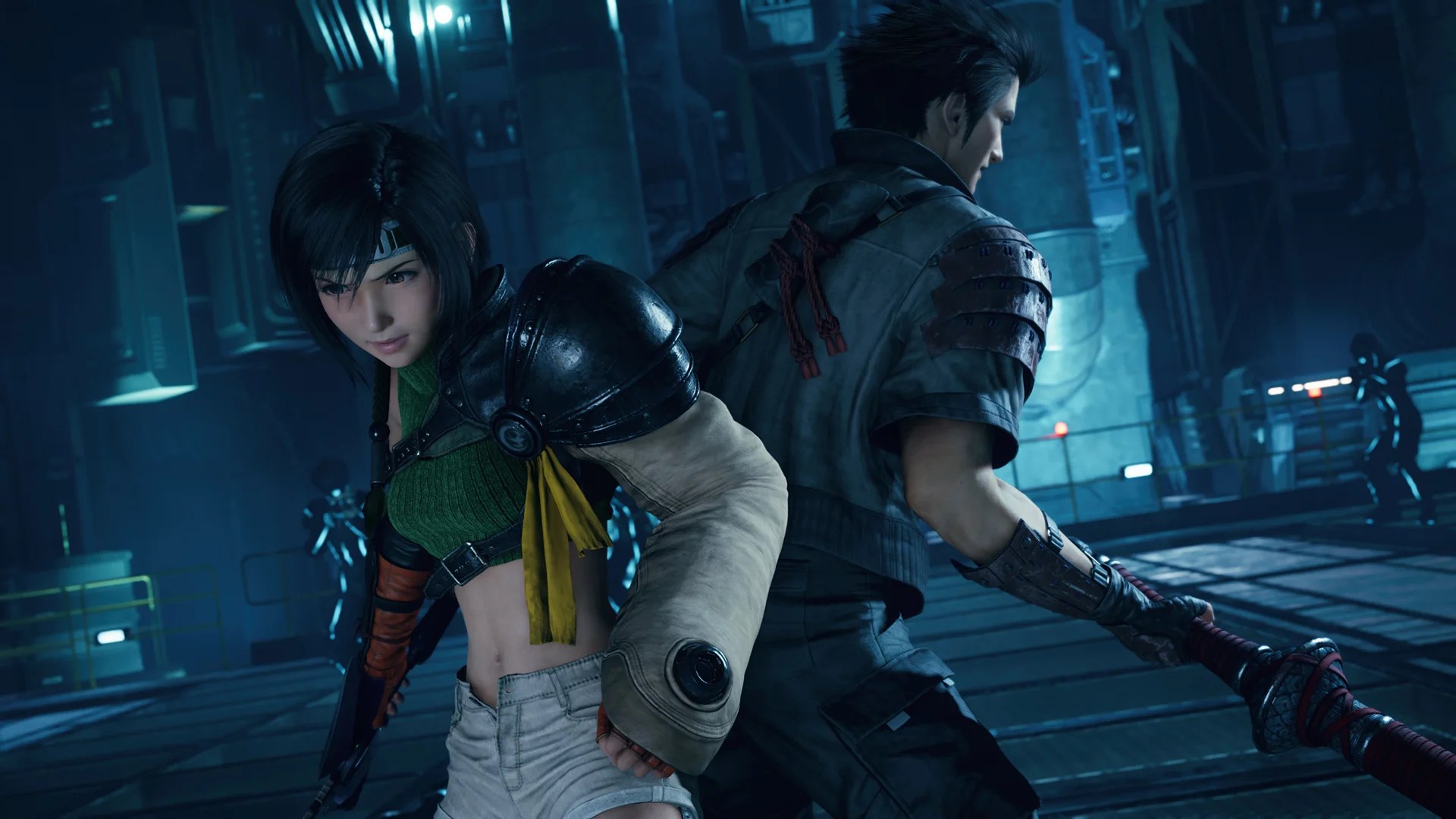
So on to the star of the new release, the DLC and the lead Yuffie. Yuffie was a quirky character in the original game but with this DLC they have taken that and enhanced it. What you wind up with is a super optimistic ninja who is smart and capable, but will also fall on her ass at times. She is a delight throughout the entire story.
The story takes place during the main events of Final Fantasy 7 Remake as Yuffie ventures into the slums then Midgar to steal some materia. What this does is tell a short story that is totally unrelated to the main game, but also feels intrinsically linked.
In Sector 7 you will meet a bunch of side characters you met in the first game and jam a new mini game. Fort Condor is a little tower defense game from the original Final Fantasy 7. It has been rebuilt as a good looking tower defence game where you bring your earned pieces and battle your way through the residents. I found it surprisingly addictive but much more and it could have become boring.
The intermission of the intergrade of the remake
One of the most interesting things about the remake was the use of the battle system. You run around performing attacks, then use the ATB gauge to use spells and abilities. This is developed further thanks to Yuffie and her massive shuriken. You can fling it to continuously attack enemies as you use spells, or go in for some frenzied action.
The weirdest thing is the game can feel like such an action game at times, I felt myself pressing X to make Yuffie jump before realising it was FF7R and there is no jumping. Instead I kept bringing up the action menu. I would like to say I learned but even in the final boss fight I was doing it.
An episode worth playing.
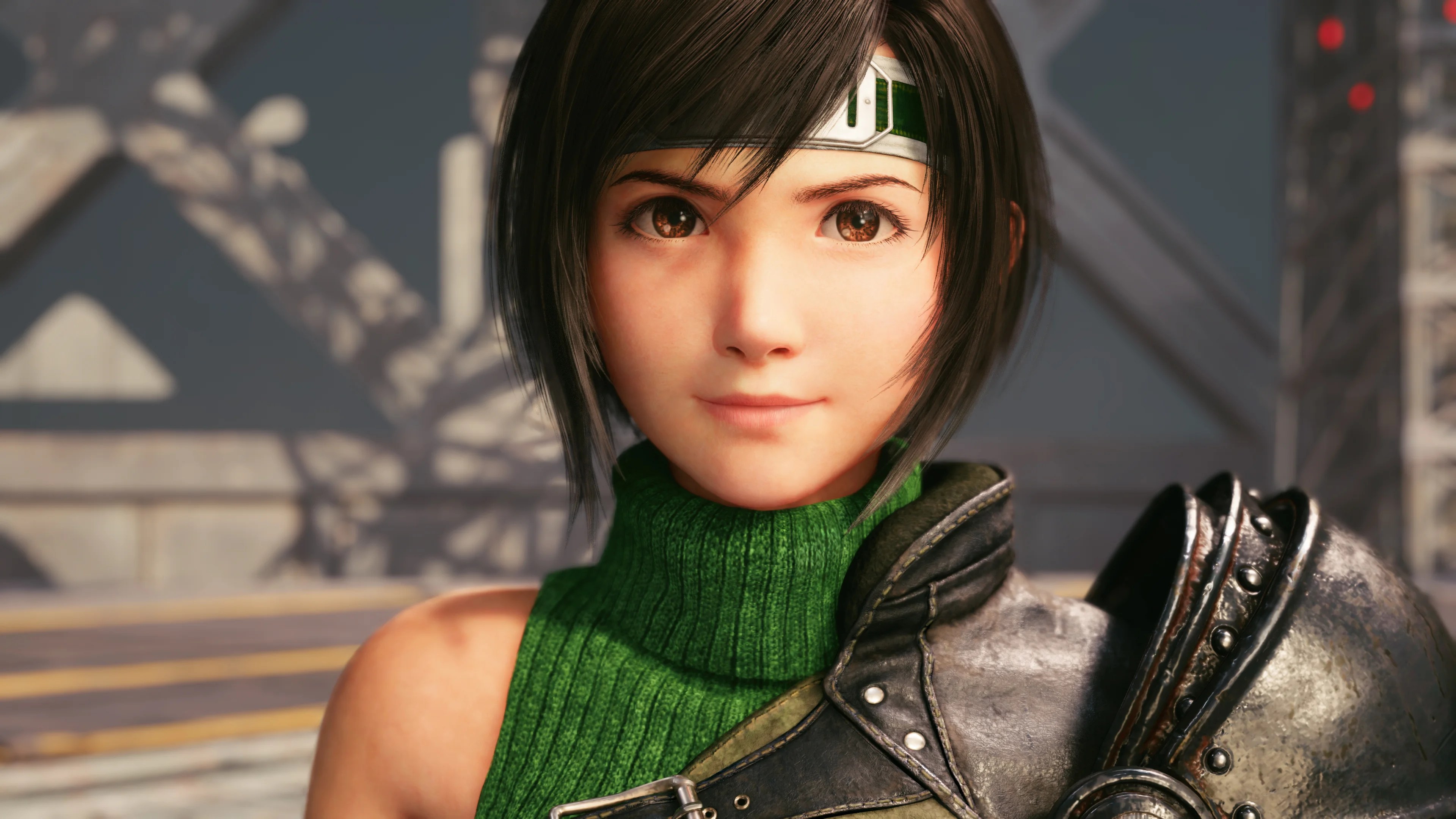
I have to say, I enjoyed Episode: INTERmission a lot more than I expected. Yuffie has gone from one of my least favourite to one of my favourite characters. Relative to the base game it isn’t long, but at over four hours it is still a decent length. Most importantly it has given us time to engage and appreciate Yuffie so she can jump in feet first with whatever Final Fantasy 7 Remake 2 winds up being.
The post Final Fantasy 7 Remake: Intergrade – Episode: INTERmission Review appeared first on 8-Bit Island.
]]>